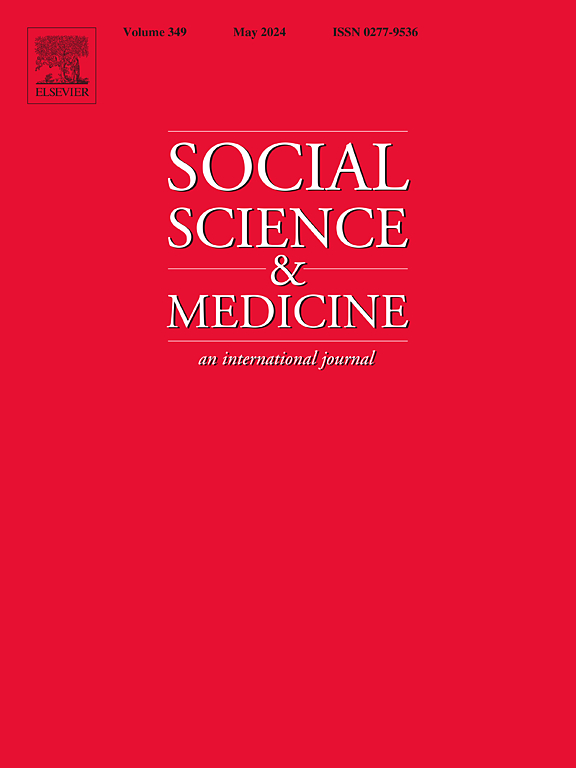2017-21 年间英国居民区之间自杀率的变化:空间尺度的作用
IF 5
2区 医学
Q1 PUBLIC, ENVIRONMENTAL & OCCUPATIONAL HEALTH
引用次数: 0
摘要
自杀变异的地理研究通常侧重于与事件发生率处于同一水平的预测因素,而不同空间尺度之间可能存在的相互作用通常并不突出。在本文中,我们重点研究了英格兰 6856 个小区域人口普查单位之间的自杀变化,但研究背景是九个地区、广泛的城乡类别和 155 个当地劳动力市场。小地区之间的自杀死亡总数差异很大,没有死亡的地区比预期的要多,因此我们采用了零膨胀回归法。在这一框架下,我们考虑了较高和较低空间尺度的因素在解释小地区自杀对比中的相对贡献,以及为什么有些地区的自杀率过高或过低。我们发现,在考虑邻里影响因素后,英国大都会地区的自杀率明显较低,但在更广泛的空间单位内,自杀风险却存在相当大的异质性。一般来说,不同的发病率与所有观察到的邻里风险因素(社会分化、社会经济地位、精神疾病、种族混合)都有显著关联,但低分化和低精神病发病率是对过低发病率的唯一显著影响因素。本文章由计算机程序翻译,如有差异,请以英文原文为准。
Suicide variations between English neighbourhoods over 2017-21: The role of spatial scale
Geographic studies of suicide variation typically focus on predictors at the same level as the event rates, and the possible interplay between different spatial scales does not generally figure. In this paper we focus on suicide variations between 6856 small area census units in England, but against a background provided by nine regions, broad urban-rural categories, and 155 local labour markets. Suicide death totals vary considerably between the small areas, with more areas than expected having no deaths, so we apply zero inflated regression. With this framework, we consider the relative contribution of factors at higher and lower spatial scales in explaining small area suicide contrasts, and why some areas have unduly elevated or unduly low suicide rates. We find significantly lower suicide levels in English metropolitan regions, after allowing for neighbourhood influences, but considerable heterogeneity in risks within broader spatial units. Varying incidence in general is associated significantly with all observed neighbourhood risk factors (social fragmentation, socioeconomic status, mental ill-health, ethnic mix), but low fragmentation and low psychiatric morbidity are the only significant influences on unduly low incidence.
求助全文
通过发布文献求助,成功后即可免费获取论文全文。
去求助
来源期刊

Social Science & Medicine
PUBLIC, ENVIRONMENTAL & OCCUPATIONAL HEALTH-
CiteScore
9.10
自引率
5.60%
发文量
762
审稿时长
38 days
期刊介绍:
Social Science & Medicine provides an international and interdisciplinary forum for the dissemination of social science research on health. We publish original research articles (both empirical and theoretical), reviews, position papers and commentaries on health issues, to inform current research, policy and practice in all areas of common interest to social scientists, health practitioners, and policy makers. The journal publishes material relevant to any aspect of health from a wide range of social science disciplines (anthropology, economics, epidemiology, geography, policy, psychology, and sociology), and material relevant to the social sciences from any of the professions concerned with physical and mental health, health care, clinical practice, and health policy and organization. We encourage material which is of general interest to an international readership.
 求助内容:
求助内容: 应助结果提醒方式:
应助结果提醒方式:


